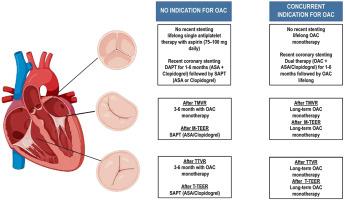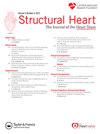Pharmacology in Structural Intervention for Valvular Heart Disease: Current Practice and Future Perspectives
IF 2.8
Q3 CARDIAC & CARDIOVASCULAR SYSTEMS
引用次数: 0
Abstract
Over the past 2 decades, structural heart interventions–including procedures like transcatheter aortic valve replacement, transcatheter mitral or tricuspid valve replacement, and transcatheter edge-to-edge mitral or tricuspid valve repair–have emerged as feasible alternatives to traditional surgery for treating valvular heart diseases. Antithrombotic treatment represents a critical aspect of postoperative care, aiming to balance the thromboembolic risk due to the incorporation of prosthetic materials and the consequently altered hemodynamics within the cardiac chambers with the bleeding risk depending on patients’ and procedural factors. This continuously evolving interplay underscores the importance of personalized, evidence-based approaches to ensure optimal outcomes. This review provides a comprehensive examination of the current knowledge on antithrombotic therapies after structural interventions, offering insights into the evolving field and emphasizing the importance of tailored strategies.

瓣膜性心脏病结构干预的药理学:当前实践和未来展望
在过去的20年里,结构性心脏干预——包括经导管主动脉瓣置换术、经导管二尖瓣或三尖瓣置换术、经导管二尖瓣或三尖瓣边缘修复术——已经成为治疗瓣膜性心脏病的传统手术的可行选择。抗血栓治疗是术后护理的一个关键方面,旨在平衡由于假体材料的掺入以及由此改变的心腔内血流动力学而导致的血栓栓塞风险,以及取决于患者和手术因素的出血风险。这种不断发展的相互作用强调了个性化、循证方法的重要性,以确保最佳结果。这篇综述提供了对结构性干预后抗血栓治疗的当前知识的全面检查,提供了对不断发展的领域的见解,并强调了量身定制策略的重要性。
本文章由计算机程序翻译,如有差异,请以英文原文为准。
求助全文
约1分钟内获得全文
求助全文
来源期刊

Structural Heart
Medicine-Cardiology and Cardiovascular Medicine
CiteScore
1.60
自引率
0.00%
发文量
81
 求助内容:
求助内容: 应助结果提醒方式:
应助结果提醒方式:


